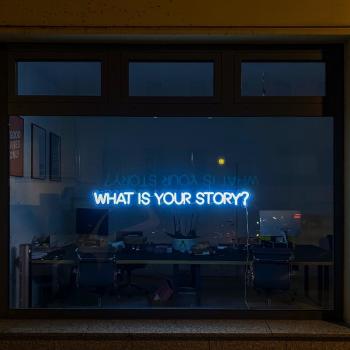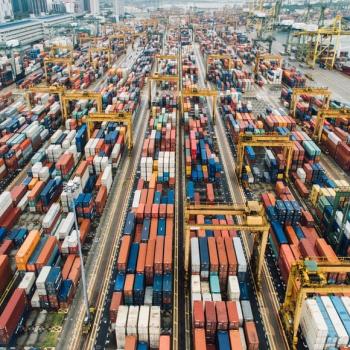This post continues our partnership with Ethix, a publication of the Center for Integrity in Business in the School of Business and Economics at Seattle Pacific University. Ethix has conducted many inspiring interviews with business  leaders, and we’re excited to feature them here from time to time! Read the previous parts of our interview with Tami Heim, who has worked for both Thomas Nelson Publishers and Borders.
leaders, and we’re excited to feature them here from time to time! Read the previous parts of our interview with Tami Heim, who has worked for both Thomas Nelson Publishers and Borders.
Retail Convergence
How do you deal with a business model where your customers use you and don’t buy from you?
That was the whole idea of retail convergence. When I was at Borders in that early day, our vision recognized that people would browse in our store and then buy online. What matter to us was to be in the best position to capture their purchase. Today, a consumer has so many more options.
There are five driving forces in retail: product, price, accessibility, experience, and service. To do well, a retailer must dominate in one of these five, and at least be competitive in two of them.
When you look at bookstores today, they no longer can compete based on assortment as compared to their online competitors. A bookstore has finite shelf space while Amazon and other Internet providers have unlimited virtual shelves. Seven million products are available through Amazon. A book superstore may only have 125,000 titles.
Ease of shopping and convenience have also been claimed by the online retailers. Today can order a book on your phone, iPad, or PC. How easy is that? With the birth of e-books, now even the actual content is delivered immediately. The price? In our wired world today, it’s easy to find the best price possible online for anything you want to buy.
Looking for an Edge
What remains as possible a competitive distinctive? There are two attributes from this list of five: the quality of personal customer service and the overall shopping experience. Sadly, in economically stressed times, these are the exact two that are most compromised.
It’s not unusual to find at a major book chain a huge line and a whole bank of unattended registers. That creates a frustration that completely detracts from the experience. With great attention on Internet and digital interaction, there is still a need for an extraordinary, wow, face-to-face experience. Most booksellers are not willing to increase those variable expenses to create a distinctive experience.
I wish I could say, “I’m really hopeful about the future of print books and traditional book stores.” I’m not. Last Christmas, we saw Amazon report e-books out-selling print books two to one. This Christmas there will be more digital reading devices hitting the market and with that another major shift will occur.
E-Books
So, e-books are the next disruption of the business model? It used to be that I could order it from Amazon but I wouldn’t get the book for a few days, whereas, I could pick it up from my local bookstore right now. But now I can download it immediately through my Kindle, Nook, iPad, or the like.
That’s right. And we will see more and more “enhanced” e-book experiences being introduced. You will be able to go deeper on an e-reader via links within the text. Those links will take you to rich background content in print, video, and audio formats.
You can also search. When I am writing something and want to include a quote from a book, I can search for it to get it right.
Correct. It is easy now and will continue to get easier. The sales of iPads and Kindles keep exploding. Kindle is becoming an incredibly important addition to a person’s suite of electronic products. It no longer matters if you are a digital immigrant and that your children are digital natives. The technology and interface is so easy – anyone can use it.
Print on Demand
There is another technology trend that seems to have been by-passed. A while back there was the idea of a bookstore could have just one copy of a book, and a very powerful print capability. When someone bought the copy of the book from the shelf, it would trigger the printer to create another copy. That would save on transportation, storage, and shipping. But this never seemed to catch on.
The issue was cost. We looked into that technology when I was at Borders. We envisioned what it would look like to have print on demand available in-store. We imagined a customer walking into a boutique setting, selecting a book, and enjoying a cup of coffee while his or her book was being printed and bound. In the end, it was too expensive and not practical to execute.
Now, however, the print on demand capability is working well for publishers. They are using it to rationalize their working capital. They can send a digital file to a printer like Ingram’s Lightning Source, print what they need when they need it, and not tie up financial investment in inventory.
But, print on demand also works against the publisher. Authors now have access to this same capability. In fact, through Amazon, an author can get professional cover design, editorial, and the production of a book via print-on-demand. Plus authors who self-publish now have access to Amazon distribution.
Stay tuned for future posts about the shakeup in publishing and whether we all have shorter attention spans. Kind permission is granted by Seattle Pacific University and the Institute for Business, Technology, and Ethics for the use of this material from Ethix magazine, where it first appeared January 2012. Image: Pixabay.














